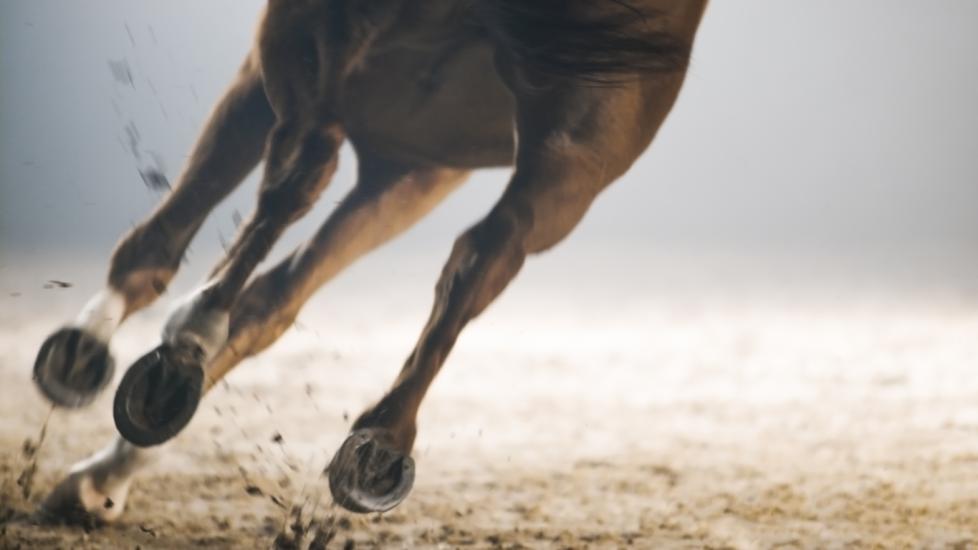Degenerative Suspensory Ligament Desmitis (DSLD) in Horses
What is DSLD in Horses?
Degenerative Suspensory Ligament Desmitis (DSLD) is a progressive and painful condition leading to the chronic breakdown of tendons and ligaments in the horse.
DSLD was first identified in Peruvian Pasos, and has since been seen in many different breeds including Quarter horses, Thoroughbreds, and Standardbreds. There appears to be a genetic component as the condition can run in families. Older horses seem to be more severely affected but early signs of this disease can be seen in younger horses as well.
This disease process of DSLD can be very frustrating as there is no known cure, but there is plenty that can be done to support a horse suffering from the condition. DSLD typically occurs bilaterally (meaning on both sides) and can be seen in just hind, just front, or all four limbs at the same time.
Symptoms of DSLD in Horses
Signs of DSLD in horses include:
-
Fetlock swelling
-
Increased fetlock angle
These symptoms can come in waves as the disease progresses and the suspensory ligament continues to break down.
Causes of DSLD in Horses
The cause of DSLD is not fully understood, but recent research suggests there are multiple genes that play a role in upsetting the equilibrium of the cells in the suspensory ligament. This may explain why there are certain breeds and lines more prone to DSLD.
How Veterinarians Diagnose DSLD in Horses
Because DSLD is not well understood, diagnosis is primarily made based on clinical signs. When a horse presents with lameness, the veterinarian will perform a full lameness exam including nerve blocking to determine the location of the lameness. In horses with DSLD, the branches of the suspensory ligament are often painful, and this can be identified with palpation and nerve blocks.
Once the location is determined, radiography and ultrasound imaging can be used to determine the cause of the lameness. Radiographs are often unhelpful in early cases of DSLD. Ultrasound can show disruption of the fiber pattern in the suspensory ligament even early in the disease progression.
Diagnosis is then based on these imaging findings and a classic clinical presentation of bilateral lameness.
Treatment of DSLD in Horses
Unfortunately, there is no cure for DSLD and treatments are typically aimed at keeping the horse as comfortable as possible for as long as possible. Decreasing exercise can help to slow disease progression and full stall rest may be necessary during particularly painful flares. Additionally, NSAID medications such as Bute, Banamine and Equioxx can be helpful to decrease swelling, inflammation, and to help keep the horse more comfortable.
Your veterinarian may also request the help of your farrier to place therapeutic shoes on the horse. These shoes typically focus on supporting the suspensory ligament and shifting the horse’s weight to the toe and other areas of the foot and limb.
Other therapies may be useful include supportive boots and shockwave. If your horse has DSLD, work with your veterinarian to determine the best treatment plan.
Recovery and Management of DSLD in Horses
DSLD is a progressive and irreversible disease. Although there is no recovery, the above treatments can help to prolong your horse’s life and comfort. They can also help to avoid or postpone secondary issues including osteoarthritis and laminitis.
DSLD in Horses FAQs
When is it time to euthanize a horse with DSLD?
This is never an easy decision for any horse owner, but it’s made even harder in a disease that slowly gets worse over time. This is a very personal decision and needs to be made on a case-by-case basis. Some clues that it is time to think seriously about euthanasia include:
-
The bad days outnumber the good
-
Your horse is spending more time laying down or is having a difficult time getting up
-
They display a severe limp or gait change
-
Their appetite has decreased, and they seem depressed
References
Brounts, Sabrina. Comparative Orthopaedic Research Laboratory. DSLD Information Page | Comparative Orthopaedic Research Laboratory, University of Wisconsin School of Veterinary Medicine.
Mehdi Momen, Sabrina H Brounts, Emily E Binversie, Susannah J Sample, Guilherme J M Rosa, Brian W Davis, Peter Muir, Selection signature analyses and genome‐wide association reveal genomic hotspot regions that reflect differences between breeds of horse with contrasting risk of degenerative suspensory ligament desmitis. G3 Genes|Genomes|Genetics, Volume 12, Issue 10. October 2022.
Featured Image: iStock.com/simonkr
